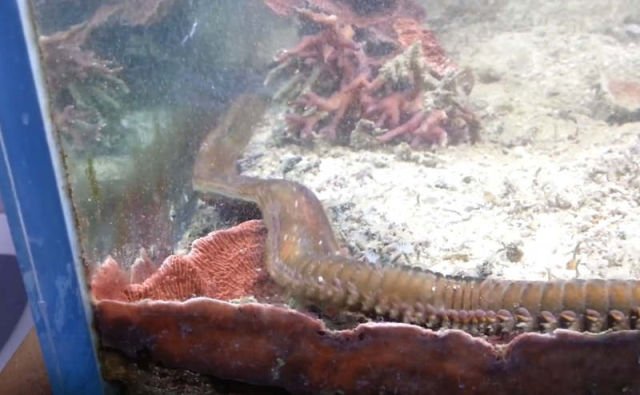
Bristle worms are often a normal part of a healthy aquarium. They help break down waste, feeding off decaying matter. However, if you find them multiplying more than you’d like, you might wonder how to bring the situation back under control. Think of them like uninvited guests at a party—they’re not inherently bad, but too many can spoil the fun. Let me walk you through how to manage bristle worm outbreaks effectively during your tank setup.
Understanding Bristle Worms
Bristle worms are segmented worms that belong to the class Polychaeta. They’re commonly found in marine environments and can hitch a ride on live rock, substrate, or even with corals. When setting up your aquarium, it’s quite easy to accidentally introduce them into your tank without realizing it. Here’s the thing: while they do play important roles in the ecosystem, an overpopulation can disrupt the harmony of your tank.
These worms are primarily scavengers, feeding on detritus and uneaten food. This means they can actually help keep your aquarium clean if they’re in reasonable numbers. However, if they start to take over, they can compete with your desired fish and invertebrates for food and shelter. Managing bristle worm outbreaks is essential to maintaining a balanced environment.
Signs of a Bristle Worm Infestation
You might be wondering how to tell if you have too many bristle worms in your tank. Some common signs include:
- Excessive Worm Visibility: Seeing several worms outside their burrows, especially during feeding time.
- Increased Fish Behavior Changes: Fish might act more aggressively or avoid certain areas of the tank.
- Uneaten Food: An uptick in leftover food that’s not being consumed by your fish or other grazing animals.
When you notice these signs, it’s a cue to take action. You don’t want your tank to feel overrun by these critters, so understanding their presence early will help you manage the population effectively.
Preventing Bristle Worm Outbreaks
The best way to handle bristle worm outbreaks? Prevention. Here are a few tips to keep them from becoming a problem in the first place:
- Inspect Live Rock and Substrate: Always check live rock and substrate before adding them to your tank. Look for any hidden worms or other pests.
- Avoid Overfeeding: This is a key factor in managing worm populations. Make sure your fish eat all the food within a few minutes.
- Regular Maintenance: Conduct regular tank maintenance to remove leftover food and waste, which can attract bristle worms.
Prevention is the best strategy. By keeping your tank clean and your fish well-fed (but not overfed), you’ll create an environment that’s less welcoming for these little guys.
Controlling Existing Populations
If you already have a bristle worm issue, don’t panic! There are several methods to help control their numbers. Let’s explore a few effective ones:
- Trap Them: Use a simple trap made from a plastic bottle. Cut the top off, invert it, and place it back inside the bottle. Add some bait, like a piece of shrimp, and set it in the tank. The worms will crawl in, but they won’t be able to escape.
- Natural Predators: Some fish and invertebrates eat bristle worms. Consider adding wrasses or certain types of gobies to your tank for natural control.
- Manual Removal: If you’re comfortable, you can remove larger worms manually with a pair of tweezers. Just be mindful—these creatures can sting if you handle them improperly.
Each of these methods has its merits, and often a combination of several will yield the best results.
Using Chemical Treatments
If you’re facing a severe outbreak, you might consider chemical treatments. However, be cautious—many of these products can also harm other inhabitants in your tank. Always read the instructions and be prepared to act quickly if something goes wrong. When using chemical treatments, look for products specifically designed to target bristle worms, and follow the dosage carefully.
It’s important to note that many aquarists prefer to avoid chemicals altogether, as they can disrupt the delicate balance of your aquarium. Your tank is a complex ecosystem, so weigh your options carefully.
Reestablishing Balance in Your Tank
After you’ve dealt with a bristle worm outbreak, your focus should shift back to maintaining a healthy balance in your aquarium. Here’s the thing: a thriving aquarium is all about balance. You need to ensure that all of your tank’s inhabitants are getting along and thriving together.
Keep an eye on your water parameters and consider regular water changes to maintain quality. Additionally, continue to monitor feeding and waste levels to prevent future outbreaks. Ensuring that your tank’s ecosystem is stable will help keep bristle worm populations at bay.
When to Seek Professional Help
Sometimes, despite our best efforts, a bristle worm outbreak can become overwhelming. If you feel unsure about how to manage it or if you’re noticing significant harm to your tank’s inhabitants, don’t hesitate to reach out for professional help. Consulting with a local aquarium store or an experienced aquarist can provide you with tailored advice for your specific situation.
Remember, aquarium keeping is a learning process, and asking for help is just part of the journey.
Final Thoughts on Bristle Worm Management
Managing bristle worm outbreaks during your tank setup doesn’t have to be daunting. By understanding these creatures, preventing their overpopulation, and employing effective control methods, you can keep your aquarium thriving. Embrace the adventure of this hobby, and remember: it’s all part of creating a beautiful and balanced aquatic ecosystem.
You’re building something special, and with a little patience and care, managing bristle worms will just be another chapter in the story of your aquarium. Happy fishkeeping!
